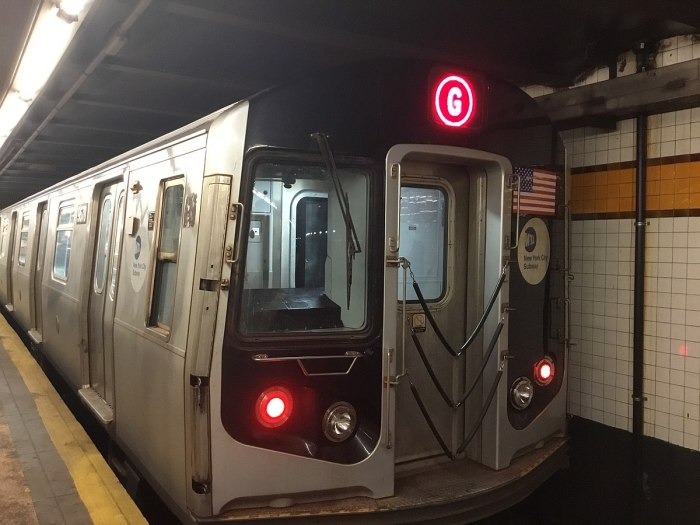
The “stuck” moment came for Valerie Joseph about a year and a half ago when she was trying to get to work near Jay Street-MetroTech.
She got off the train and pressed the button for the elevator. It didn’t work.
That was a problem for Joseph, 42, who uses a wheelchair due to a spinal cord disability.
She sighed. Emergency personnel came. Eight firefighters helped her, two to carry her body and 6 for her chair, which weighed some 400 pounds.
No wonder Joseph is leary of riding the subway, the majority of whose stations aren’t wheelchair accessible. The ones that are might give you trouble anyway.
Joseph lives in Queens Village with her parents, about 4 blocks from the nearest bus stop, a car ride from the nearest subway.
She takes buses when she can, but that involves transfers. An Access-a-Ride trip, the big white vans, can be convenient but you have to order one to two days in advance.
For the last year or so, however, Joseph has had a far better option: the MTA’s “on-demand e-hail” pilot program, a word jumble that essentially means Joseph can use an app on her phone to order a taxi to take her where she needs to go. After a short wait, the car arrives, and she pays her $2.75 fare in cash. For the 1,200 customers involved in the pilot, the MTA picks up the rest.
Needless to say this is a popular alternative for people who have trouble getting around the city with the current MTA infrastructure. The program has averaged around 26,000 trips per month, says an MTA spokesman, part of the MTA’s push to be better on accessibility issues which has included the first-time appointment of a “Senior Advisor for Systemwide Accessibility” last June.
But the MTA announced last week (after Daily News reporting) that changes could be in store for e-hailers. The program was extended through the end of the year, but some modifications might be made as the authority figures out how to make the program “more sustainably permanent and even expandable.”
The program is paid for by subsidies like any other. And for users like Joseph without other good options, it’s money well spent.
“It gives me my freedom,” she says – more so than Access-a-Rides, which the plan-ahead restrictions and shared space. More so even than another MTA paratransit-taxi program that allows users to book a private ride but still requires early notice.
Joseph was among the advocates who came to an MTA committee meeting on Monday to push for the fuller on-demand program. NYC Transit President Andy Byford apologized for poor information flow and said "we are determined to give you that fully accessible system that you deserve." But the exact future of the program is still unclear.
You could see how useful the on-demand program was for Joseph on Tuesday. She had to get from her office in downtown Brooklyn to lower Manhattan, where she was meeting with City Council staff as part of her job as an advocate for the Brooklyn Center for Independence of the Disabled.
At noon, she came downstairs and tapped on her Curb app to summon a vehicle. In under ten minutes, it had arrived.
The driver, Mohamed Mustafa, immediately got out and began setting up the ramp in the trunk of the car. He greeted Joseph and pushed her up the ramp, fastening the chair via four buckles. Within minutes he was driving through Jay Street traffic.
Mustafa, 36, had actually driven Joseph before. He said that in these difficult times for taxi drivers, when Uber and Lyft were taking potential riders, it was good to have some definite rides set up via app.
“It moves the business,” he said.
Once the cab got to the Brooklyn Bridge it was a quick ride. Joseph did some work calls and emails – she uses voice activation software to help, given nerve issues with her hands – and arrived at her meeting in time, without having to risk the Jay Street-MetroTech elevator.
She hopes the MTA can continue and expand the hailing program, so that the city will be as navigable to her as it is to people who can swipe and catch a train.
“We as people with disabilities shouldn’t have limitations on us,” she said.
































